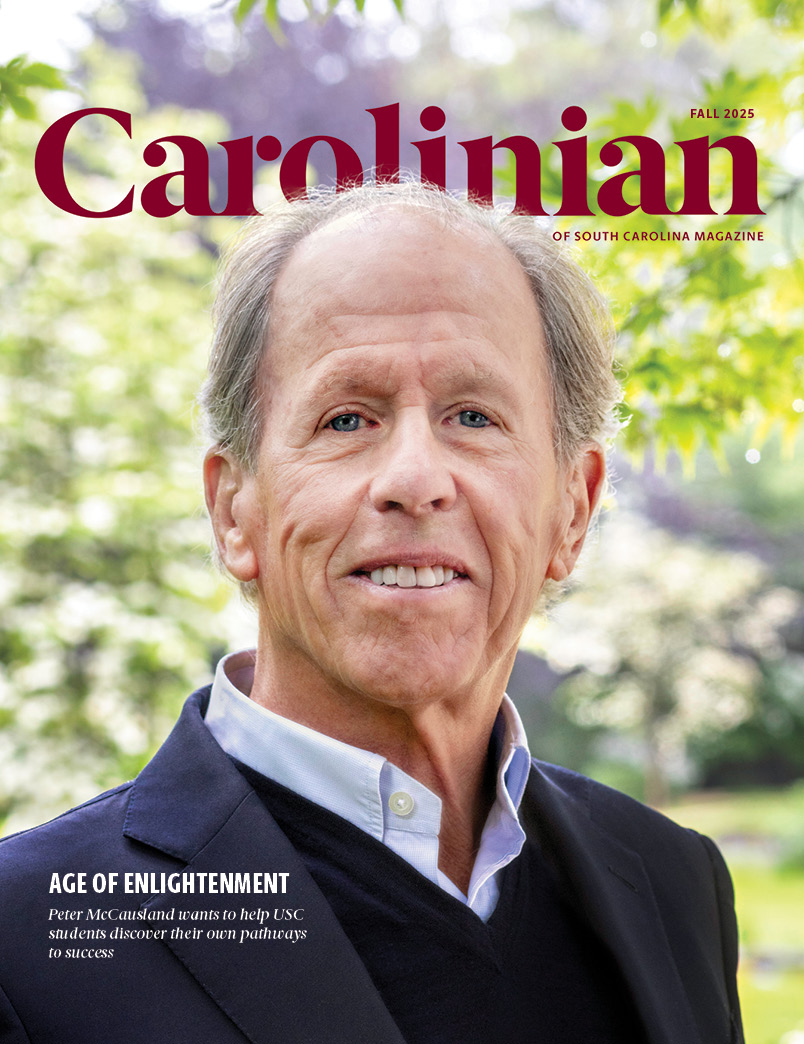Lessons Earned
Entrepreneur Meherwan Irani carves his own path to top of the restaurant industry
Posted on: July 26, 2022; Updated on: July 26, 2022
By Craig Brandhorst, craigb1@mailbox.sc.edu, 803-777-3681
Chai Pani is one of the best restaurants in America.
That’s according to the James Beard Foundation, which honored the Asheville, North Carolina, Indian street food outlet with its coveted Outstanding Restaurant award for 2022. And if you’ve ever stood in line for the crispy fish masala roll or matchstick okra fries, you may be nodding in agreement.
People flock to the casual, budget-friendly dining room from all over, drawn by glowing press and word of mouth. The restaurant has been featured in the New York Times, Bon Appetit, GQ, Food & Wine, Garden & Gun — if they write about food, they’ve written about Chai Pani.
According to owner and executive chef Meherwan Irani, though, the award is as much about the restaurant’s mission as its menu. The food is still the star — prior to the Outstanding Restaurant award, Irani had been nominated five times for Best Chef in the Southeast — but the visionary behind all those stellar creations isn’t satisfied staying in the kitchen.
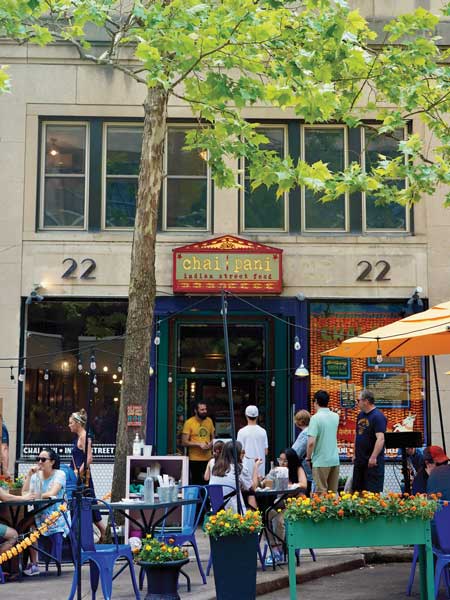
Diners line up outside Chai Pani’s downtown Asheville location for a taste of something different. Photo by Sarah Hoski
“Restaurants are so much greater than the sum of what’s inside the four walls,” Irani told the awards night audience June 13 in Chicago. “A restaurant has the power to transform — transform the people that work there, transform the people that come in, transform the communities we’re in, transform society. Restaurants can transform the world.”
And restaurants have transformed Irani. After coming to the United States to pursue an MBA at the Uni-versity of South Carolina in the early 1990s, he bounced from job to job and coast to coast, waiting tables in Myrtle Beach to pay for school and selling luxury cars in the San Francisco Bay Area to support his family before launching Chai Pani in 2009.
Now, he runs a growing culinary empire that includes not only the Asheville flagship but seven other restaurants in Asheville, Charlotte and the Atlanta area. Now, he turns up on the Food Network, the Travel Channel and CBS This Morning. Now, he elevates other Indian and Indian-American chefs, promotes an evolving Southern foodscape and, yes, wins awards.
Then there’s Spicewalla. Irani launched the mail-order/retail spice line in 2017, and it’s now carried by Wal-Mart, Whole Foods, Costco, World Market and upwards of 1,300 independent retailers across the U.S. With a new retail storefront now open in the Atlanta area, another on the way in Asheville and more than 250 spices and spice blends in the collection, Spicewalla is poised to eclipse the company’s restaurant sales by the end of 2023.
Sitting in the conference room at the back of Chai Pani’s downtown Asheville headquarters, Irani ponders the winding path that led him here. The sidewalk below the second story window will soon be crowded with tourists vying for a table next door, but at this point in his career, the man behind all that buzz takes the attention in stride.
“The takeaway, looking back, is the importance of truly taking the time to figure out what you want to be good at,” he says as he tussles his graying hair. “Only at age 39, in the middle of the Great Recession, did I finally admit to myself this is what I want to be good at. But when I look back, everything I’ve done along the way positioned me perfectly to be successful in the restaurant business, including being a chef.”
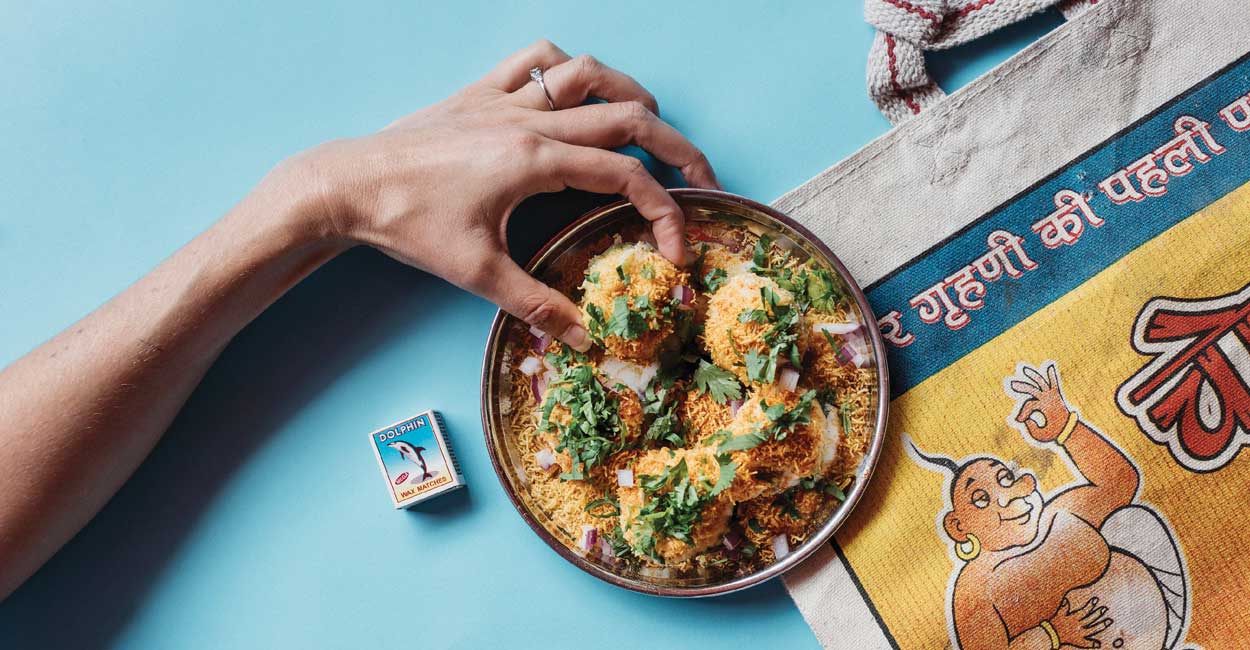
Chai Pani’s chaat menu items like sev potato dahi puri offer diners new to Indian cuisine an approachable and delicious first taste. Photo by Jack Sorokin
Fearless Fusion
Meherwan Irani was born in Britain but grew up in Ahmednagar, India, hometown of renowned spiritualist Meher Baba. Irani’s grandparents ran a bed-and-breakfast there, and Irani’s mother worked in the B&B kitchen, trans-lating Indian dishes for westerners on pilgrimage to Meher Baba’s ashram, Meherabad.
“I grew up watching my mother do what many immigrant chefs do today once they come to America, and very much what we do at Chai Pani,” Irani explains. “We take sometimes esoteric Indian dishes and make them approachable, familiar without dumbing them down, without losing the essence of the dish, without taking away anything.”
Only the lessons took some time to take. In the India of Irani’s childhood, boys weren’t welcome in the kitchen — “It was a very patriarchal society,” he explains — and “watching” really meant tasting, something that took place at the table not the stove.
“I was certainly shooed out of the kitchen because I would just be underfoot the entire time, but I got to experience a whole different set of cuisines,” he says. “I grew up eating lasagna for lunch, but maybe made with goat meat, and then rice and dal with a spinach dish for dinner. We had casseroles and curries. We had, you know, steamed pudding and pappadam.”
Then he arrived in the United States. In the 1940s, Meher Baba had established a retreat in Myrtle Beach and Irani had family there, so South Carolina seemed like as good a place as any to begin his pursuit of the American Dream. After catching up on credits at Coastal Carolina, at that point still part of the USC system, he enrolled in the MBA program in Columbia.
But grad school was a mixed bag. He had an assistantship in the computer lab at the bottom of the Byrnes Building, where he picked up valuable tech skills, but he also commuted to Myrtle Beach on the weekends to wait tables at a restaurant that didn’t ask for a work permit. He aced some classes and flubbed others, and when his grades cost him his assistantship, he took more shifts waiting tables to make up the difference.
“I was just squeezing myself tight, barely enough time to study because of how hard I was working,” he says. “That was a terrible combination, and my grades subsequently reflected it.”
He also found himself 8,500 miles from Mom’s kitchen and hungry for a taste of home.
“In my early days at USC in Columbia, when I started cooking, I was trying to experiment at home, but I just could not replicate what she did,” he says. “So, the first time she came to visit I said, ‘Mom, how do you make that dish? And why is it everybody loves it?’ And she says, ‘Let’s go shopping.’”
Of course, in 1992 Columbia there was no Whole Foods, there was no Trader Joe’s. There certainly weren’t any Indian groceries. Instead, Irani and his mom hit Rosewood Market, a natural foods store near campus. There, she taught her son to shop like a chef — and get creative.
“They had a small selection, but she said, ‘Oh, don’t worry they don’t have fennel seed, we’ll use carraway. They don’t have star anise? We’ll use cinnamon.’ She would fearlessly substitute ingredients, spices and ideas, and whatever she made was amazing.” He pauses to consider his words. “Fusion is a dirty word in this business, but she managed to fuse together both worlds in this really beautiful way. I grew up taking that for granted until I came to America.”
Bridging the Gap
If Mom’s cooking lit the fire in Irani’s home kitchen, street food stoked the businessman’s flame. While he still reveres the classic curries and other dishes of his homeland, the innovations of renegade street vendors mirrored his mother’s ‘whatever works’ philosophy.
“In India, and in most countries, street food is not really traditional, it’s a hodgepodge,” he explains. “Immigrants come to big cities, set up food stalls and work with whatever’s available to create dishes that you almost always only find in the street.”
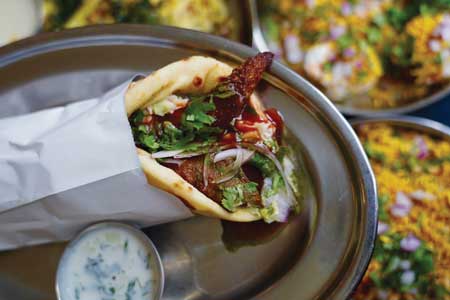
Sandwiches and wraps like the crispy fish masala roll are at once familiar and exotic. Photo by Sarah Hoski
In other words, no rules. Some chefs might balk at radical reinterpretations of saag paneer or tikka masala — “When you come from a country with a cuisine that goes back 4,000 years,” he warns, “you can get in hot water if you mess with tradition” — but a popular street snack like vada pav (essentially a fried potato patty) might be interpreted a dozen ways on the same street. “You can’t say, ‘Well, it’s not done this way,’ because there’s no one way that street food is done. It truly is up to the whim of that particular hawker.”
Now, that whimsy is reflected on the Chai Pani menu, which features a few Indian staples plus inspired takes on burgers, wraps and salads. There’s also a wide selection of chaat, AKA savory street snacks, the kind sold throughout the Indian subcontinent. And while some dishes maintain their traditional names, Irani isn’t afraid to translate.
“I am very proud of my heritage. I’m not trying to dumb anything down,” he says. “But if somebody can’t even pronounce something we serve, how are we going to bridge that gap?”
One trick? Simply add more whimsy. Take the sloppy Jai, one of Chai Pani’s most popular dishes. A spicy lamb-and-chutney riff on the sloppy Joe, it serves as a gateway for diners stepping out of their comfort zone, an education for the western palate.
“I could call it kheema pav, or I could be playful and call it the sloppy Jai,” he explains. “It’s assembled like a sloppy Joe sandwich, so everybody ‘gets’ it, but you’re actually eating what’s probably a 14th century Persian dish from India.”

Chai Pani’s Asheville flagship restaurant (bottom) stays packed at lunch and dinner. Photo by Sarah Hoski
The Finished Dish
A lot of Chai Pani’s success boils down to storytelling. And no one tells that story better than Irani himself, an immigrant who discovered his adopted country from the outside in — and stumbled a few times along the way.
“You know, I arrived in America with $600 in my pocket,” he says. “The first three things I purchased in America were a pair of Levi’s, a pair of Nikes and a Bruce Springsteen cassette, Born in the USA. After that, it felt like I was dealing with crisis after crisis.”
Except some crises are educational. Irani’s grades didn’t get him booted from the MBA program — he stayed on, sans assistantship, for two more semesters. But the struggle took its toll, and before he could complete his last few credits he was on the verge of a nervous breakdown and headed to California, following the woman, Molly, who would become his wife.
A few months later he found himself in Marin County, selling luxury automobiles, making money, wondering if he should even bother finishing the MBA. He had learned plenty in his classes, but he had a new family to raise, and, as he discovered, he was very good at sales.
It would be ten years before he went into business for himself — not in car sales but as a restaurateur. To someone else, it might have seemed like a risky decision, but to Irani, whose kitchen experiments had continued after leaving graduate school, the ingredients came together perfectly.
“Growing up, I absorbed a lot from my mother and from her cooking,” he says. “Understanding what makes people tick, I got that from my time in sales. Understanding economics, understanding accounting, understanding systems — all that I got from the MBA program.”
The combination has set him apart in an industry with a high failure rate, allowing Irani to flourish where others might fold. He tents his fingers, checks his watch and smiles. He’s late for another meeting — he is very much in demand these days — but he wants to finish the story.
“Most people open independent restaurants because they’re chefs and visionaries, creative types, and they love cooking,” he says. “Typically, they have very little business background, very little background in retail, very little background in consumer psychology. I came from the other world. I came from the world of sales and marketing and business, and then I had a creative bug. I don’t think I would have been successful otherwise.”
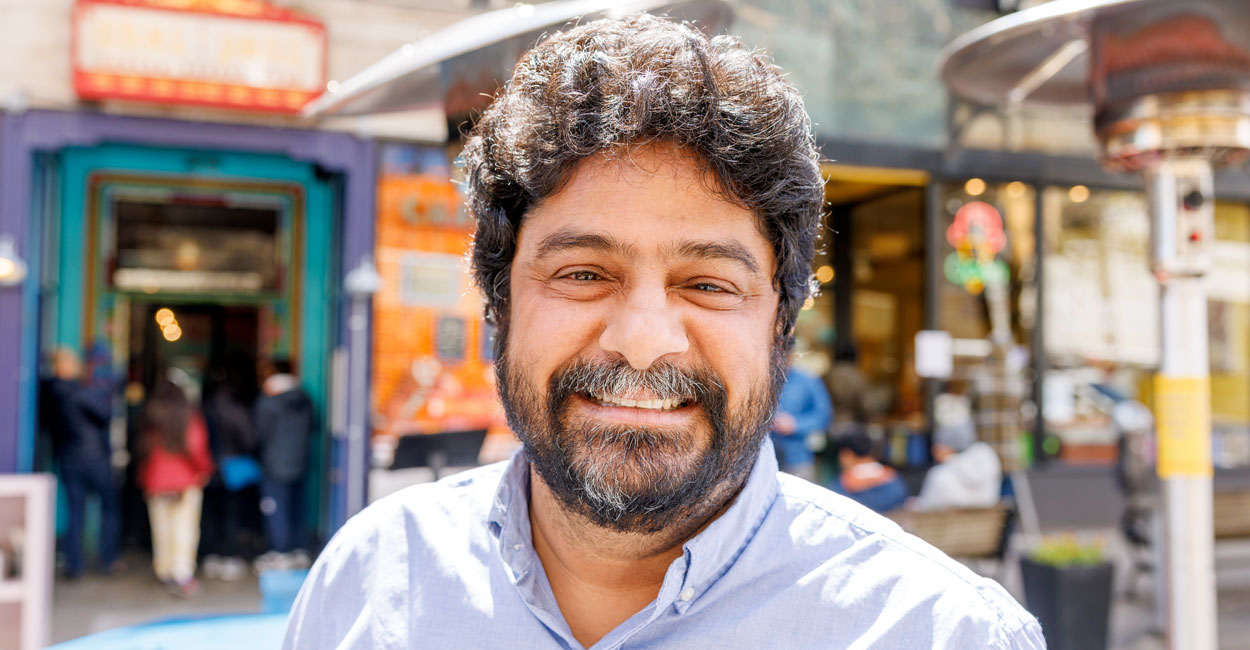
SIDE DISH: Brown in the South?
Meherwan Irani doesn’t simply invite diners to expand their palates at Chai Pani; he wants to expand their minds — to reshape their ideas of cultural identity, including what it means to be Southern.
The Brown in the South collaborative dinner series debuted in 2018, born of a conversation with celebrated Oxford, Mississippi-based chef Vishwesh Bhatt at the Southern Foodways Alliance Symposium in San Francisco. When Irani asked Bhatt if he thought of himself as an Indian who happens to live in the South or a Southerner who happens to be from India, Bhatt didn’t hesitate. “Oh dude, I’m a Southerner,” he said, “but I’m obviously Indian.”
The answer hit home. After three decades in the U.S., Irani knew other Southern chefs with Indian backgrounds doing interesting things in the kitchen, so he decided to showcase their talents through a ticketed dinner series, with proceeds supporting the Southern Foodways Alliance.
“The whole point of the series was to get a conversation going with other people that look like me,” says Irani. “The South has one of the most talked about histories in America, but in order for the rest of the country to see the South is not just what came before but also what’s happening now, people like me need to stand up and be counted.”
The pandemic put the series on hiatus, but with write-ups in Fortune, Bon Appetit and Saveur, the conversation was underway.
“Immigrants tend to often be passive in their identity when they come to a new place,” Irani says. “Part of that’s survival instinct, ‘keep your head down, get your work done, don’t stand out.’ But then things never change.”
